
I. Raw Coal Production Growth Accelerates, Imports Turn Positive, Prices See Slight Increases
Recently, relevant departments have implemented various measures to ensure a stable coal supply, leading to a noticeable acceleration in raw coal output growth. In September, raw coal output reached 300 million tons, marking a year-on-year increase of 7.6%, which is 3.5 percentage points faster than the growth rate in August. The average daily output was 9.937 million tons, an increase of 557,000 tons compared to August. From January to September, raw coal output totaled 2.59 billion tons, up 5.7% year-on-year.
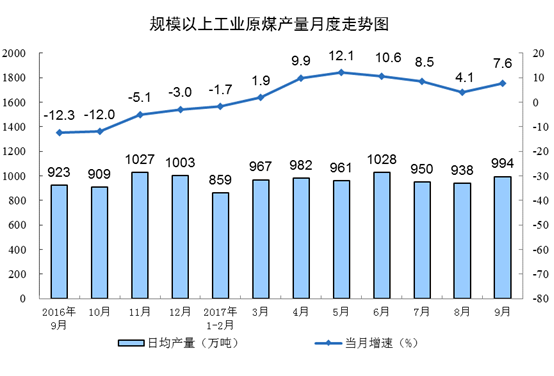
In September, coal imports amounted to 27.08 million tons, showing a year-on-year increase of 10.8%. This marked a shift from negative to positive growth, with imports increasing by 1.81 million tons compared to August. From January to September, coal imports reached 200 million tons, a year-on-year increase of 13.7%.
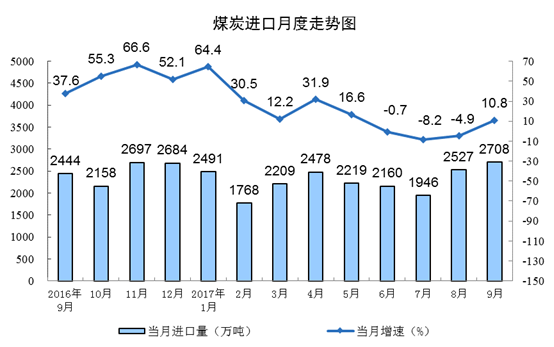
Since September, as policies by relevant departments to ensure supply and stabilize prices were gradually implemented, coal prices, after a brief surge in mid-September, began to stabilize. However, with the heating season approaching and under the influence of winter storage expectations, coal prices remain elevated. As of the end of September, the free-on-board (FOB) price for 5500 Kcal coal at Qinhuangdao Port was 623 yuan per ton, an increase of 16 yuan from the end of August; 5000 Kcal coal was 604 yuan per ton, up 48 yuan; and 4500 Kcal coal was 532 yuan per ton, up 39 yuan.
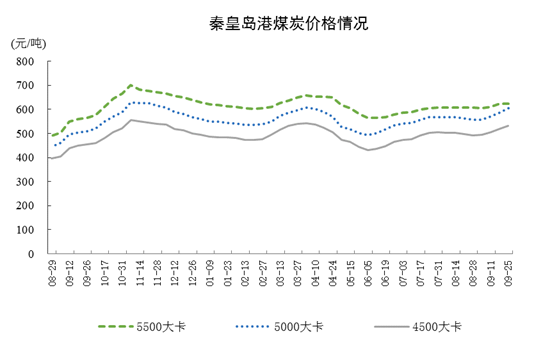
II Decline in Crude Oil Production Narrows, While Imports and Crude Oil Processing See Rapid Growth
Affected by the continuous narrow-range fluctuations in international crude oil prices, crude oil production continued to decline. In September, crude oil output fell by 2.9% year-on-year, with the decline narrowing by 0.2 percentage points compared to August. The daily average output was 518,000 tons, an increase of 3,000 tons from August. From January to September, crude oil output reached 140 million tons, a year-on-year decrease of 4.4%.
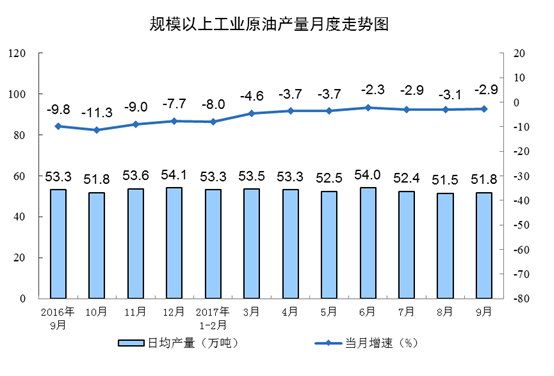
Crude oil import growth accelerated. In September, crude oil imports totaled 37.01 million tons, a year-on-year increase of 11.9%. This volume was 3.03 million tons higher than in August, and the growth rate accelerated by 8.5 percentage points compared to August. From January to September, crude oil imports amounted to 320 million tons, up 12.2% year-on-year.
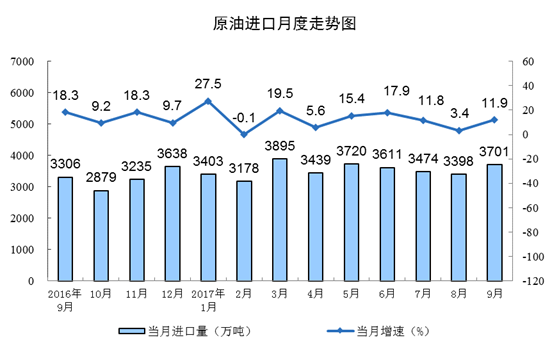
Crude oil prices continued to rebound. Since August, prices have largely remained above $50 per barrel. As of September 29th, the Brent crude oil spot price was $57.0 per barrel, an increase of $4.3 per barrel from the end of August.

Influenced by factors such as new refining capacity and the rebound in domestic refined oil product prices, crude oil processing experienced rapid growth in September, increasing by 12.7% year-on-year, a 6.2 percentage point acceleration from August. The daily average processing volume was 1.645 million tons, an increase of 125,000 tons from August. The year-on-year growth rates for major refined oil products (gasoline, kerosene, and diesel) all significantly increased compared to August, with gasoline accelerating by 10.4 percentage points, kerosene by 12.3 percentage points, and diesel by 7.1 percentage points, respectively. From January to September, crude oil processing volume reached 420 million tons, a year-on-year increase of 4.7%.

III. Natural Gas Production Maintains Rapid Growth, While Import Growth Slows
Driven by strong demand for clean energy consumption, natural gas production has maintained rapid growth throughout the year. In September, natural gas output reached 11.15 billion cubic meters, a year-on-year increase of 10.7%, though the growth rate was 1.0 percentage point lower than in August. The daily average output was 370 million cubic meters, a decrease of 20 million cubic meters from August. From January to September, natural gas output totaled 108.72 billion cubic meters, up 9.1% year-on-year.

Natural gas import growth slowed. In September, natural gas imports amounted to 5.94 million tons, an increase of 3.7% year-on-year. This growth rate was a significant 66.5 percentage points lower than in August, mainly due to a higher base figure in the same period last year. From January to September, natural gas imports reached 48.38 million tons, a year-on-year increase of 22.3%.
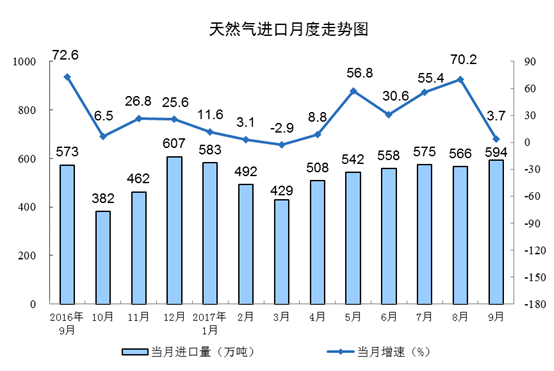
IV. Electricity Production Accelerates, Hydropower Output Grows Significantly
In September, power generation reached 521.96 billion kilowatt-hours (kWh), a year-on-year increase of 5.3%, with the growth rate accelerating by 0.5 percentage points compared to August. Affected by favorable water conditions in some southern regions, hydropower output grew significantly, increasing by 18.6% year-on-year, a growth rate 13.6 percentage points faster than in August. Consequently, thermal power growth declined, turning negative, with a year-on-year decrease of 0.5%, marking its first monthly year-on-year decline since June 2016.
In September, nuclear, wind, and solar power generation accelerated significantly, growing by 21.9%, 36.8%, and 25.2% respectively, accelerating by 7.7, 12.5, and 6.5 percentage points compared to August.
From January to September, total power generation amounted to 4689.14 billion kWh, a year-on-year increase of 6.4%. During this period, the proportion of nuclear, wind, and solar power generation increased by 1.1 percentage points compared to the same period last year, further optimizing the electricity production structure.
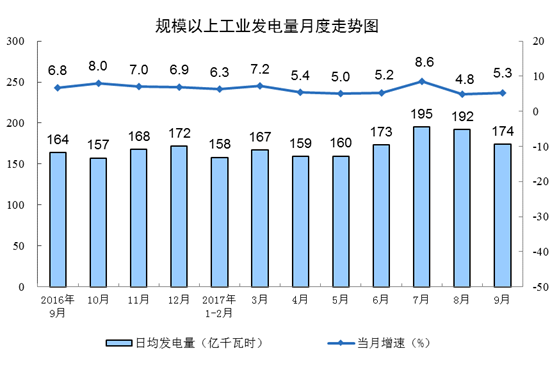
Source: National Bureau of Statistics Website